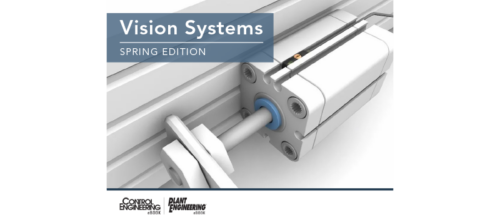Three machine vision trends for 2020
Machine vision trends to watch out for include embedded vision and improved metrology and vision-guided robotics
Throughout the manufacturing and industrial sectors, machine vision is having a significant impact. Machine vision is no longer limited to brick-and-mortar facilities but is finding its way into environments like farms, airports, and roadways. Burgeoning Industry 4.0 systems rely on machine vision-enabled devices to report what they capture to the cloud so artificial intelligence can make informed decisions.
1. Metrology and vision-guided robotics
As robotic systems evolve and gain further mobility, the demand for more intelligent and faster 3-D measurement and guidance systems increases. The complex algorithms used in 3-D imaging systems must process images in real-time. This includes measuring the distance between a number of points so moving robots know exactly where they are in 3-D space.
3-D imaging systems have been well-solved for applications like the bin picking of randomly oriented, homogenous objects. But in the case of heterogeneous and unknown objects such as parcels and boxes, 3-D imaging algorithms must improve their accuracy. Expect the new year to ring in the development of features like fast 3-D reconstruction of object surfaces for measurement that could speed up automation production rates.
2. Embedded vision
Embedded imaging combines image capture and processing capabilities into a single device. This machine vision technology has found its way into many industrial applications such as inspection and sorting systems. Manufacturers have even integrated embedded vision into products like self-driving automobiles, autonomous drones, and smartphones.
Expect to see embedded vision integrated into even more automation systems in 2020. Additional preprogrammed, embedded image processing applications will allow more industries to implement their own AI and deep learning solutions. More products designed for very specific commercial tasks will be made available for simpler plug and play solutions.
3. Liquid lenses
As camera resolutions increase and pixel sizes decrease, component lens suppliers have stepped up to the task of delivering better optics. Lens performance must improve not just in quality, but also in speed. Liquid lenses can change focus almost instantly by means of a change in current or voltage without the mechanical changes of conventional lenses.
Recently, liquid lenses have moved beyond smart sensors and smart cameras and into complex industrial applications. Liquid lenses shine when imaging distance varies and quick focus is required. In 2020, expect more component cameras to be released with embedded processing that can automatically control the liquid lens, making the technology more flexible than ever.
This article originally appeared in Vision Online. AIA is a part of the Association for Advancing Automation (A3), a CFE Media content partner. Edited by Chris Vavra, associate editor, CFE Media, cvavra@cfemedia.com.
Original content can be found at www.visiononline.org.
Do you have experience and expertise with the topics mentioned in this content? You should consider contributing to our CFE Media editorial team and getting the recognition you and your company deserve. Click here to start this process.


